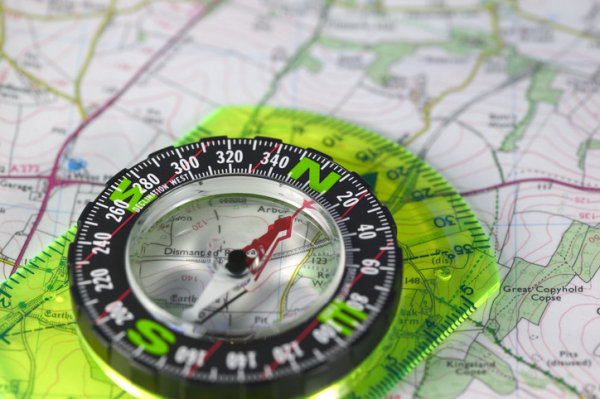
Swimming lessons save lives: What parents should know

Before going any further, here’s the main thing parents should know about swimming lessons: all children should have them.
Every year, over 4,500 people die from drowning in the United States — and, in fact, drowning is the leading cause of death for children ages 1 to 4. Swimming lessons can’t prevent all of those deaths, but they can prevent a lot of them. A child doesn’t need to be able to swim butterfly or do flip turns, but the ability to get back to the surface, float, tread water, and swim to where they can stand or grab onto something can save a life.
10 things parents should know about swimming lessons
As you think about swimming lessons, it’s important to know:
1. Children don’t really have the cognitive skills to learn to swim until they are around 4 years old. They need to be able to listen, follow directions, and retain what they’ve learned, and that’s usually around 4 years old, with some kids being ready a little earlier.
2. That said, swim lessons between 1 and 4 years old can be useful. Not only are some kids simply ready earlier, younger children can learn some skills that can be useful if they fall into the water, like getting back to the side of a pool.
3. The pool or beach where children learn must be safe. This sounds obvious, but safety isn’t something you can assume; you need to check it out for yourself. The area should be clean and well maintained. There should be lifeguards that aren’t involved in teaching (since teachers can’t be looking at everyone at all times). There should be something that marks off areas of deeper water, and something to prevent children from getting into those deeper areas. There should be lifesaving and first aid equipment handy, and posted safety rules.
4. The teachers should be trained. Again, this sounds obvious — but it’s not always the case. Parents should ask about how teachers are trained and evaluated, and whether it’s under the guidelines of an agency such as the Red Cross or the YMCA.
5. The ratio of kids to teachers should be appropriate. Preferably, it should be as low as possible, especially for young children and new swimmers. In those cases, the teacher should be able to have all children within arm’s reach and be able to watch the whole group. As children gain skills the group can get a bit bigger, but there should never be more than the teacher can safely supervise.
6. There should be a curriculum and a progression — and children should be placed based on their ability. In general, swim lessons progress from getting used to the water all the way to becoming proficient at different strokes. There should be a clear way that children are assessed, and a clear plan for moving them ahead in their skills.
7. Parents should be able to watch for at least some portion. You should be able to see for yourself what is going on in the class. It’s not always useful or helpful for parents to be right there the whole time, as it can be distracting for children, but you should be able to watch at least the beginning and end of a lesson. Many pools have an observation window or deck.
8. Flotation devices should be used thoughtfully. There is a lot of debate about the use of “bubbles” or other flotation devices to help children learn to swim. They can be very helpful with keeping children safe at the beginning, and helping them learn proper positioning and stroke mechanics instead of swimming frantically to stay afloat, but if they are used, the lessons should be designed to gradually decrease any reliance on them.
9. Being scared of the water isn’t a reason not to take, or to quit, swimming lessons. It’s common and normal to be afraid of the water, and some children are more afraid than others. While you don’t want to force a child to do something they are terrified of doing, giving up isn’t a good idea either. Start more gradually, with lots of positive reinforcement. The swim teacher should be willing to help.
10. Just because a child can swim doesn’t mean he can’t drown. Children can get tired, hurt, trapped, snagged, or disoriented. Even strong swimmers can get into trouble. While swimming lessons help save lives, children should always, always be supervised around water, and should wear life jackets for boating and other water sports.
The Centers for Disease Control and Prevention website has helpful information on preventing drowning. The American Red Cross offers an online water safety course for caregivers and parents and water safety videos for children. Many public pools and organizations like Boys & Girls Clubs and the YMCA offer swimming classes for all ages.
About the Author

Claire McCarthy, MD, Senior Faculty Editor, Harvard Health Publishing
Claire McCarthy, MD, is a primary care pediatrician at Boston Children’s Hospital, and an assistant professor of pediatrics at Harvard Medical School. In addition to being a senior faculty editor for Harvard Health Publishing, Dr. McCarthy … See Full Bio View all posts by Claire McCarthy, MD
About the Reviewer

Howard E. LeWine, MD, Chief Medical Editor, Harvard Health Publishing
Dr. Howard LeWine is a practicing internist at Brigham and Women’s Hospital in Boston, Chief Medical Editor at Harvard Health Publishing, and editor in chief of Harvard Men’s Health Watch. See Full Bio View all posts by Howard E. LeWine, MD

Orienteering: Great exercise and better thinking skills?

Picture this: you’re with friends in an unfamiliar forest using only a map and a compass to guide you to an upcoming checkpoint. There are no cell phones or GPS gadgets to help, just good old brainpower fueled by a sense of adventure as you wind through leafy trees and dappled sunlight.
This is not an excursion to a campsite or a treasure hunt. It’s a navigation sport called orienteering — a fun way to get outside, exercise, and maybe even help fight cognitive decline, according to a 2023 study.
What is orienteering?
Orienteering combines map and compass reading with exercise. Competitors (“orienteers”) race against a clock to reach checkpoints in outdoor settings that can range from city parks to remote areas with mountains, lakes, rivers, or snowy fields.
“You can go out in a group or on your own. You get a very detailed map and navigate your way to checkpoints that record your time electronically,” says Clinton Morse, national communications manager with Orienteering USA, the national governing body for the sport in the United States.
Because orienteers are racing the clock, they might run on trails, hike up hills, or scramble around boulders. That’s for foot-orienteering events. There are also orienteering events with courses geared for mountain biking, cross-country skiing, or canoeing.
How might orienteering affect thinking skills?
A small 2023 study published online in PLoS One found a potential link between orienteering and sharp thinking skills.
Researchers asked 158 healthy people, ages 18 to 87, about their health, activities, navigation abilities, and memory. About half of the participants had varying levels of orienteering experience. The other participants were physically active but weren’t orienteers.
Compared with study participants who didn’t engage in orienteering, those who were orienteers reported
- having better navigational processing skills (recognizing where objects were, and where participants were in relation to the objects)
- having better navigational memory skills (recalling routes and landmarks).
The study was observational — that is, not a true experiment — and thus didn’t prove that orienteering boosted people’s thinking skills. But the link might be plausible.
“Aerobic exercise releases chemicals in the brain that foster the growth of new brain cells. And when you use a map and connect it to landmarks, you stimulate growth between brain cells,” says Dr. Andrew Budson, lecturer in neurology at Harvard Medical School and chief of cognitive and behavioral neurology at VA Boston Healthcare System.
Where can you find orienteering opportunities?
There are about 70 orienteering clubs across the United States, and many more around the world (the sport is extremely popular in Europe). To find an orienteering event in your area, use the club finder tool offered by Orienteering USA.
How can you get started with orienteering?
People of all ages and athletic levels can take part, because orienteering courses vary from local parks to wilderness experiences. Costs are about $7 to $10 per person for local events, or $25 to $40 per person for national events, plus any travel and lodging expenses.
To make orienteering easy at first, Morse suggests going with a group and taking things slowly on a short novice course. “You don’t have to race,” he says. “Some people do this recreationally to enjoy the challenge of completing a course at their own pace.”
The trickiest part is learning to read the map. Morse’s advice:
- Turn the map as you change directions. Hold the map so that the direction you’re heading in is at the top of the page. For example, if the compass indicates that you’re heading south, turn the map upside down, so the south part is on top and easier to follow.
- Create a mental image of what the map is telling you. If there’s a fence along a field on the map, build a picture of it in your mind so you can recognize it when you see it, even if you haven’t been there before.
Tips for safe and enjoyable orienteering events:
- Dress appropriately. Wear comfortable clothes including long pants, good walking shoes, and a hat.
- Lather up. You’ll be outside for at least an hour, and you’ll need sunblock and possibly tick and bug spray depending on the terrain. Preventing tick bites that can lead to Lyme disease and other tick-borne illnesses is important in many locations.
- Bring some essentials. Pack water, a snack, sunblock, bug spray, and your phone. (Keep the phone turned off unless you need to call for help.)
- Use good judgment. Know that the shortest route on the map won’t always be the best, since it might take you up a hill or through thick vegetation. It might be better to go around those areas.
Once you learn the basics of orienteering, you can make it more physically challenging (and a better workout) by going faster and trying to beat your previous times, or by signing up for a more advanced course that’s longer and requires more exertion and speed.
And no matter which event you take part in, enjoy the adventure. “You’re not just following a path, you’re solving puzzles while being immersed in nature,” Morse says. “It’s a great way to experience the outdoors.”
About the Author

Heidi Godman, Executive Editor, Harvard Health Letter
Heidi Godman is the executive editor of the Harvard Health Letter. Before coming to the Health Letter, she was an award-winning television news anchor and medical reporter for 25 years. Heidi was named a journalism fellow … See Full Bio View all posts by Heidi Godman
About the Reviewer

Howard E. LeWine, MD, Chief Medical Editor, Harvard Health Publishing
Dr. Howard LeWine is a practicing internist at Brigham and Women’s Hospital in Boston, Chief Medical Editor at Harvard Health Publishing, and editor in chief of Harvard Men’s Health Watch. See Full Bio View all posts by Howard E. LeWine, MD